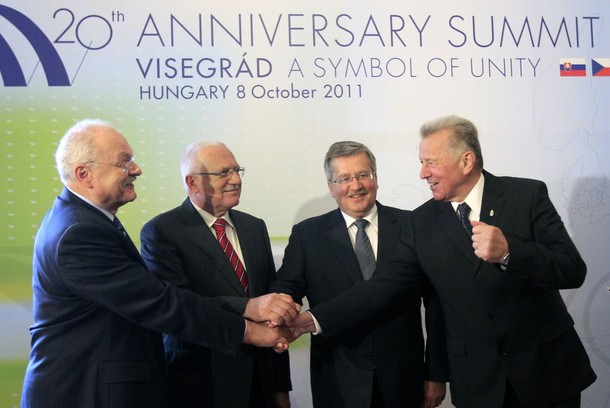
From Jan Hamacek and Jakub Kulhanek, the New Atlanticist: Today, Europe accounts for only 21 percent of spending in NATO. The picture is no less striking in Central Europe, where only Poland’s defense spending hovers above NATO’s two per cent of its GDP minimum threshold. The Czech Republic and Slovakia, on the other hand, have seen their defense budgets shrink alarmingly close to the figure of one per cent. In the case of the Czech Republic, this means that every once in a while the government is forced to scale down its already meager defense commitments and reconsider its defense priorities. At a time of profound uncertainty, the Czechs already admit that for them it would be extremely difficult to send troops abroad under the current budgetary malaise.
For many, this is a perfect storm in the making. Yet, as the saying goes, no good crisis should be wasted. As a result of their budgetary constraints, the governments in the region are forced to cooperate in the spirit of the Smart Defense initiative as promoted by NATO Secretary General Anders Fogh Rasmussen. Time and time again the example of Nordic countries is invoked to demonstrate the possibilities of regional cooperation. Yet, interestingly enough, despite their supposed closeness, these countries have had a particularly dismal track record of cooperation. Within the framework of the Visegrad Four Group, a regional grouping consisting of the Czech Republic, Poland, Slovakia and Hungary, attempts have been made in the past but turned out largely unsuccessful. A notable exception was the joint Czech-Slovak brigade, but the lack of noteworthy success stories is palpable.
What accounts for this lack of cooperation? First and foremost, the CEE countries still guard defense as their sovereign realm with not much appetite for large-scale cooperation. This is partially due to the lack of a cooperative culture and different mechanisms of how CEE militaries operate. One such example is their decision to acquire new jet fighters. In the end, they have opted to acquire different jet fighters individually, missing out on the opportunity to secure a hefty discount on a joint tender. The problem ,however, is that each military follows a different acquisition cycle. In other words, if one country is to retire its jet fighters its neighbour is unlikely to follow suit because its jet fighters still have several more years of service. This has been a painful realisation, as demonstrated by past failures of other ambitious projects.
Nevertheless, there is cause for cautious optimism. Small projects, such as joint field hospitals or joint training of helicopter pilots represent small yet important steps to accelerate cooperation. Although these initiatives usually involve only two or three countries, they demonstrate that it is much easier to cooperate regionally as opposed to NATO-wide initiatives. More importantly, this may instil the much-needed trust in cooperation among CEE countries so as to make large-scale cooperation possible one day.
The experience of CEE countries suggest that less ambitious projects might produce the desired outcomes, thereby helping to build momentum for more robust cooperation down the road.
Jan Hamacek is the Shadow Defense Minister and the head of the Czech Delegation to the NATO Parliamentary Assembly. He is a member of the Social Democratic Party. Jakub Kulhanek is a policy consultant and research fellow at the Association for International Affairs, Prague. (photo: Reuters)
Image: reuters%206%2015%2012%20Visegrad.jpg
